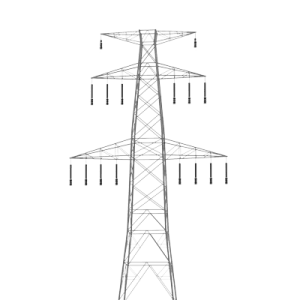Energy transformations: Solar energy
Learn how we transform the sun's energy into energy we can use.

Overview
Students watch a video about solar energy and two different technologies that convert solar energy into other energy forms, including electricity. Students then test their knowledge of solar energy presented in the video with the “Solar: fact or fiction?” worksheet.
Instructions
What you'll need
- “Solar: fact or fiction?” worksheet
Think about solar energy
- Ask students to rate their knowledge of solar energy on a scale of one to five. Have them think about the things they know about solar energy, then hold up between one and five fingers to represent how much they think they know - one means they only know a little; five means they think they know a lot.
- In partners, have students share what they know, then ask a few students to share some of their solar energy knowledge with the class.
- Review the “Solar: fact or fiction?” worksheet with your students, then they can answer true or false for each statement. Compare their answers with a partner and discuss any of their guesses that are different.
Solar 101
- Watch the video.
- Show the video again, this time asking students to put up a hand if they hear a statement from their worksheet. Pause the clip so students can check their answers. If needed, watch the video again until all correct answers have been found.
Discussion
- Review the statements on the worksheet and for each, ask how many students had a correct initial answer. Discuss any challenging questions.
- With the class, recall that energy has various forms and that the process of changing from one form to another is called a transformation. The sun’s energy represents the energy input and the electricity or heat created is the energy output. Solar energy technologies (photovoltaic and thermal) are devices that make the transformation occur.
- Complete the rest of the worksheet.
- Ask students to rate their level of understanding again (from one to five) and compare to their rating at the beginning of the activity. Ask what questions they have about solar energy that they could investigate further.
Modify or extend this activity
- Continue to explore renewable energy with "Energy transformations: Wind power" and "What is renewable energy?".
- Use the questions generated at the end of the activity to create a solar energy inquiry.
Curriculum Fit
Grade 4 Science
Content
- Energy has various forms
- Devices that transform energy
Curricular competencies
Questioning and predicting
- Demonstrate curiosity about the natural world
- Identify questions about familiar events that can be investigated
Evaluating
- Identify some simple environmental implications of theirs and others’ actions
Communicating
- Represent and communicate ideas and findings in a variety of ways
Assessments
- Note the student’s contributions to whole class discussion and their group work interactions.
- Take note of their self-assessment on level of understanding at the beginning and end of the activity.
- Review the “Solar: fact of fiction?” worksheet to ensure accuracy. The last section should reflect the key points in the video.
Answer key:
- False
- There isn’t much solar energy available.
- True
- Solar technology converts sunlight to another type of energy.
- False
- There are five categories of solar energy technologies.
- False
- Photovoltaic means using pictures of the sun to make electricity.
- True
- Solar thermal technology makes heat.
- False
- Solar energy is non-renewable.
- True
- The amount of solar energy depends on the time of day.
- False
- There is more solar energy available in the winter than other seasons.
Teaching Notes
The sun is the Earth’s main source of energy. It can be transformed to other energy forms we can use. How is solar energy transformed? The two main forms of solar energy transformation technologies are photovoltaic (electricity) and thermal (heat). Solar energy is considered one of the cleanest and most renewable sources of energy. There are no direct greenhouse gases released into the environment from the generation of energy from solar power.
Example of solar energy technologies:
- Solar photovoltaic technology converts sunlight into direct current electricity by using semiconductors contained in solar panels. When the sun hits the semiconductor material electrons are freed, forming an electric current. The electricity is available immediately by the home owner, and can be used to charge batteries or fed to an electric grid. Solar panels are visible on roof tops on homes and businesses.
- Solar thermal technology transforms solar energy to heat, which is then used to heat homes, businesses and even swimming pools, or transformed again into electricity.







